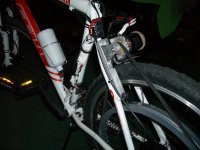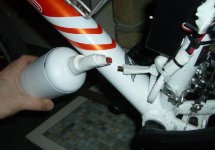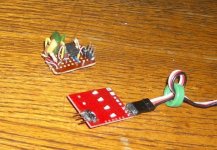Grinhill
10 kW
Some great news on the motor controller front - I no longer have a problem with the ESC losing sync.
In an earlier post (19 April) I mentioned that I bought a new hobbycity ESC, the HV 100A model, but it was D.O.A.
Last week a replacement finally turned up (the turnaround wasn't that bad, it took a while for me to package it up and post back to Hong Kong).
Yesterday I re-wired the bike, and had to add a 5V supply to work with the opto-coupled throttle signal, and then tweaked the settings.
Strangely, the "Normal" start gave the best performance. "Very Slow" start was very jittery and hard to get moving.

Now for the road test. In a word, fantastic.
So much better, now I don't have to fiddle with the throttle just to accelerate. Smooth, constant power!
Well worth the extra money.
In an earlier post (19 April) I mentioned that I bought a new hobbycity ESC, the HV 100A model, but it was D.O.A.
Last week a replacement finally turned up (the turnaround wasn't that bad, it took a while for me to package it up and post back to Hong Kong).
Yesterday I re-wired the bike, and had to add a 5V supply to work with the opto-coupled throttle signal, and then tweaked the settings.
Strangely, the "Normal" start gave the best performance. "Very Slow" start was very jittery and hard to get moving.

Now for the road test. In a word, fantastic.
So much better, now I don't have to fiddle with the throttle just to accelerate. Smooth, constant power!
Well worth the extra money.



